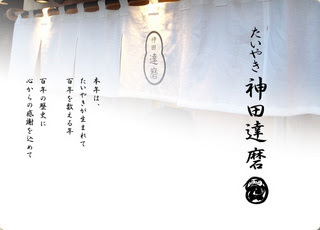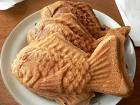:::::::::::::::::::::::::::::::::::::::::::::::::::::::::::::::::::::::::::::::::::::::::::::::::::::
Temple Sanpo-Ji 三寳寺 (さんぽうじ)
Sanpooji 三宝寺 Sanpoji

A Nichiren sect temple founded in December 8 1628.
The statue in the Myoken-do Hall was carved around the middle of the Edo period and the deity it depicts is affectionately known as 'the Myoken of Narutaki.' Chinese quince trees line the approach to the temple while the cherry trees next to the Main Hall are said to have been transplanted from the Imperial Palace. Both quince and cherry trees are well known features of the temple.
On the first Sat and Sun in December, the temple bustles with people who come to take part in the 'Nichirenshu no Daikodaki' or 'Nichiren White Stewing Radish Festival.'
source : kaiwai.city.kyoto.jp
Narutaki no Myoken-san
Matsumoto-cho Narutaki Ukyo-ku
京都市右京区鳴滝松本町32
:::::::::::::::::::::::::::::::::::::::::::::::::::::::::::::::::::::::::::::::::::::::::::::::::::::
Mikuji - fortune telling slips in a wooden Daruma

source : Copyright (C) 2009 ZauCats
http://www.geocities.jp/philn/kyoto/ukyoku/sanpoji/sanpoji11.html
Charm
Click for enlargement
:::::::::::::::::::::::::::::::::::::::::::::::::::::::::::::::::::::::::::::::::::::::::::::::::::::
厄落としの大根焚き(お会式)Daikotaki
Cooking Radishes for Nichiren
kigo for mid-winter

This festival is in memorial of Saint Nichiren and Nichiro 日朗上人.
If you eat a piece of the radish stew, you will be protected for the coming year and also not contract palsy 中風封じ祈祷.
Radishes are cooked with tofu from Saga 嵯峨豆腐.
When believers gave this soup to Nichiren, he tasted it and said
大根は大仏堂の大釘の如し、
あじわいは『とうり天』の甘露のごとし」
The big radish is like a nail of the big Buddha Hall.
It tasts like the sweet dew in the paradise of Tooriten.
There is also cooked rice with yuzu citron flavor, yuzu gohan ゆず御飯, another speciality which Nichiren liked very much and praized highly as food to warm the body.

厄落としの大根焚き
:::::::::::::::::::::::::::::::::::::::::::::::::::::::::::::::::::::::::::::::::::::::::::::::::::::
Japanese HP
http://www.sanpouji.or.jp/index.html
:::::::::::::::::::::::::::::::::::::::::::::::::::::::::::::::::::::::::::::::::::::::::::::::::::
Saint Nichiren 日蓮上人
and related KIGO
Bishamonten and the Tooriten paradise とう利天
Myooken Bosatsu 妙見菩薩 Myoken Bosastu
Daikodaki (daikotaki) 大根焚 Cooking large radishes
kigo for mid-winter
:::::::::::::::::::::::::::::::::::::::::::::::::::::::::::::::::::::::::::::::::::::::::::::::::::::::::::::::::::::::::::
Sanpo-Ji in Tokyo, Nerima Ward
練馬区の石神井公園近くにある三宝寺
Tokyo, Nerima, Shakujiidai

source : Nobuhiro, facebook
. Fudō Myō-ō, Fudoo Myoo-Oo 不動明王 Fudo Myo-O
Acala Vidyârâja - Vidyaraja - Fudo Myoo .
- quote
Ikefuchi Historical Park
On the south of Shakujii Pond 石神井公園, just behind a little fox shrine, is the much smaller Ikefuchi Historical Park (池淵史跡公園) where shards of pottery were found, believed to be connected to the Shakujii Castle mentioned above. It is due to have a small museum built in it by March 2010.
Just a little east of Ikefuchi Historical Park is Sanpoji Temple, built in 1394 and later moved here.
At the eastern end of Sanpoji Pond, just in front of the site of Shakujii Castle, is where Japan's first 100 meter pool was built, in 1918, for training Japanese swimmers in preparation for the 1920 Olympic Games in Antwerp, Belgium. In 1989, the eastern end of the old pool was turned into a "Waterside Observation Park" (水辺観察園) where various rare waterside flora can be seen, and serving as a resource for the full renaturing of the area.
- source : www.japanvisitor.com
:::::::::::::::::::::::::::::::::::::::::::::::::::::::::::::::::::::::::::::::::::::::::::::::::::::::::::::::::::::::::::
[ . BACK to WORLDKIGO TOP . ]
[ . BACK to DARUMA MUSEUM TOP . ]
:::::::::::::::::::::::::::::::::::::::::::::::::::::::::::::::::::::::::::::::::::::::::::::::::::::























































